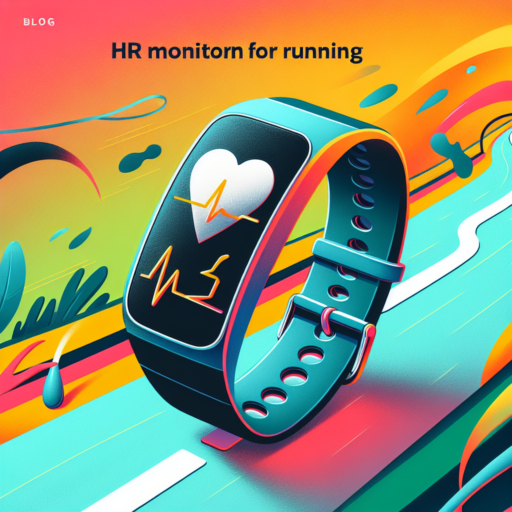What should my pulse be when running?
Understanding your ideal heart rate while running is crucial for optimizing your exercise routine and ensuring your workouts are safe and effective. Primarily, your target heart rate should fall within a certain range, which is typically calculated as a percentage of your maximum heart rate. This range varies depending on your age, fitness level, and running goals.
Calculating Your Target Heart Rate Zone
To determine your ideal pulse when running, you first need to know your maximum heart rate, which can be roughly estimated by subtracting your age from 220. For most adults, the target heart rate zone for moderate-intensity exercise is about 50% to 70% of your maximum heart rate. For vigorous exercise, this zone increases to 70% to 85%. So, when running, aim to keep your pulse within these percentages to make the most of your workout without overexerting yourself.
Monitoring Your Pulse
Keeping track of your heart rate while running can be done using a heart rate monitor or even manually by checking your pulse. Feel for your pulse on your wrist or the side of your neck, count the number of beats for 15 seconds, and then multiply by four to get your beats per minute (BPM). Comparing this number to your target heart rate zone helps ensure you’re running at the right intensity for your fitness objectives.
Bear in mind that several factors, such as heat, humidity, and your physical condition, can influence your heart rate. Thus, it’s essential to listen to your body and adjust your running pace as needed, ensuring your pulse stays within the recommended range for optimal benefits and safety.
What is the best heart rate monitor for running?
Choosing the best heart rate monitor for running can significantly enhance your training sessions, allowing you to optimize your performance based on real-time data. With the vast selection available in the market, identifying the right one for your needs depends on several factors, including accuracy, comfort, and connectivity.
Accuracy is paramount for a heart rate monitor as it ensures you train within your targeted heart rate zones. Monitors come in two primary styles: chest straps and wrist-based models. Chest straps are often lauded for their precision, as they closely monitor your heart’s electrical activity, providing near EKG-level accuracy. Wrist-based monitors, on the other hand, offer convenience and comfort, utilizing optical sensors to measure blood flow. While they have significantly improved in reliability, their accuracy can sometimes be affected by factors like movement and sweat.
Another aspect to consider is connectivity. A heart rate monitor that seamlessly syncs with your existing devices—whether it’s a smartphone, a GPS watch, or even a bike computer—can greatly enhance your training experience. This connectivity ensures that all your training data is readily accessible, making it easier to track progress and adjust your training plan accordingly.
No se han encontrado productos.
Is a heart rate monitor useful for running?
When pondering the utility of a heart rate monitor for running, it’s essential to recognize how this tool can transform your training approach. At its core, a heart rate monitor doesn’t just track your beats per minute; it provides a window into your body’s response to physical stress and recovery. This insight can be incredibly valuable for runners aiming to optimize their performance and minimize the risk of overtraining.
Understanding Your Training Zones
One of the key benefits of using a heart rate monitor during running is its ability to identify your training zones. These zones, which range from light intensity to maximum effort, are determined based on percentages of your maximum heart told. By training in specific zones, you can focus on improving cardiovascular efficiency, endurance, or speed, making your workouts more effective and goal-oriented. A heart rate monitor helps you stay within the desired zone, ensuring that you’re not pushing too hard or going too easy.
Preventing Overtraining
An often overlooked advantage of monitoring your heart rate is its role in preventing overtraining. Overtraining occurs when you exceed your body’s ability to recover from workouts, leading to fatigue, decreased performance, and even injury. By keeping an eye on your heart rate, particularly your resting heart rate and how it changes over time, you can catch early signs of overtraining. This data allows you to adjust your training load and intensity, ensuring that you maintain a healthy balance between training and recovery.
In conclusion, the utility of a heart rate monitor for runners cannot be overstated. It serves not only as a guide for defining and staying within training zones but also as a crucial tool in avoiding the pitfalls of overtraining. Embracing this technology can lead to smarter, safer, and more effective running training sessions.
Is 170 bpm bad when running?
Understanding Your Heart Rate During Exercise
When evaluating if a 170 bpm (beats per minute) heart rate is bad when running, it’s important to understand the concept of maximum heart rate and the target heart rate zones. The maximum heart rate is generally estimated by subtracting your age from 220. For many individuals, particularly those who are more fit, reaching 170 bpm during intense workouts may fall well within their higher cardiovascular zones, indicating a significant but normal exertion level.
Factors Influencing Heart Rate
Several factors can influence your heart rate during running, including fitness level, age, temperature, and hydration levels. Athletes with a higher level of cardiovascular fitness often have a lower resting heart rate and a higher threshold for intense exercise, allowing their heart rates to climb higher without negative effects. Therefore, confirming that 170 bpm is bad without considering personal health and fitness context is not straightforward.
When to Be Concerned
While a heartbeat of 170 bpm can be typical and even advantageous for some during running, it’s crucial to pay attention to how you feel at this intensity. Symptoms such as dizziness, chest pain, extreme shortness of breath, or feeling faint are clear indicators that you should stop and seek medical advice. Listening to your body and consulting with a healthcare provider for personalized advice is always recommended to ensure your running intensity is safe for your specific health conditions.




